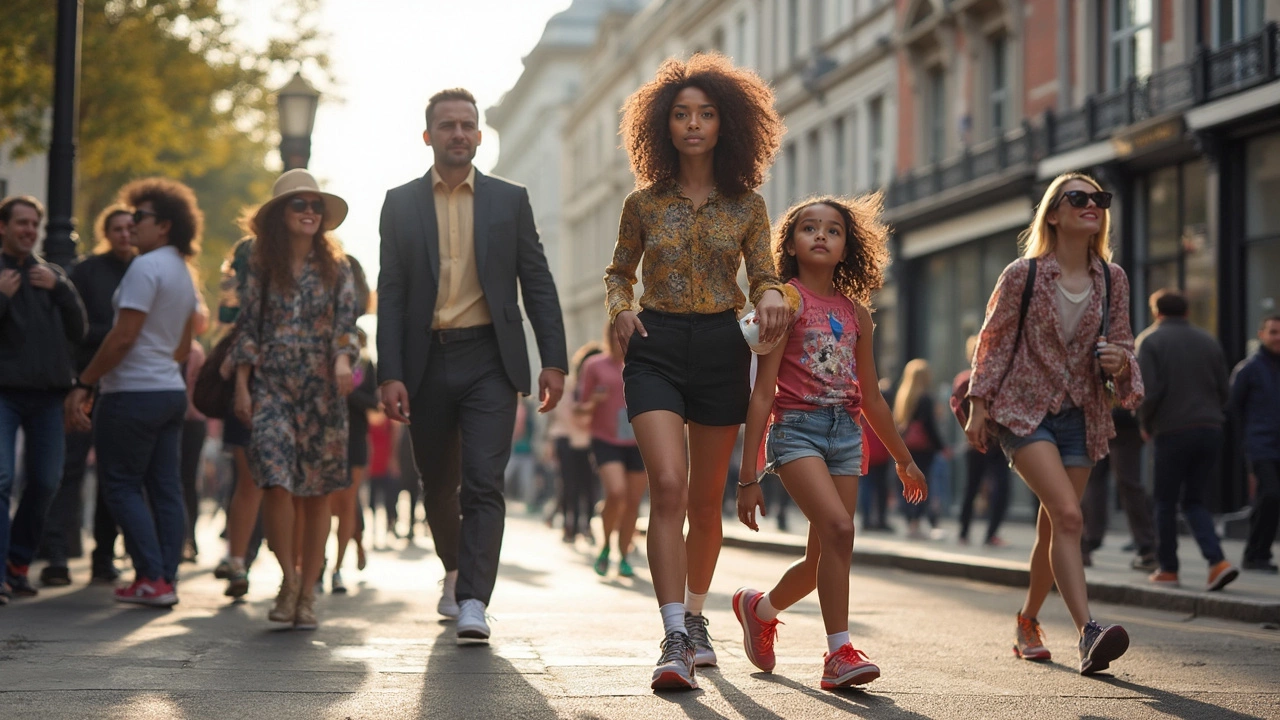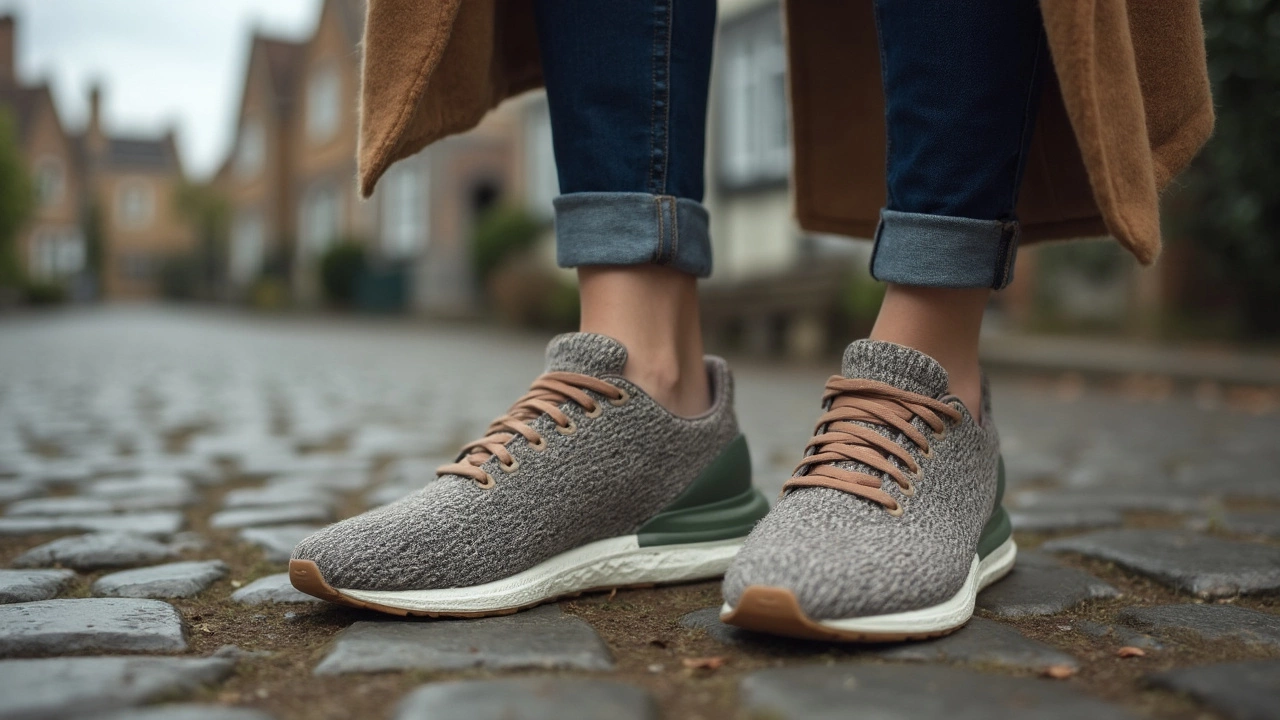Is It Okay to Wear Running Shoes When Not Running?
 Mar, 14 2025
Mar, 14 2025
Let's face it: your sneakers are probably some of the most versatile shoes in your collection. With the rise of athleisure, wearing running shoes outside the realm of actual running has become quite the trend. But is it okay to sport those comfy kicks during your day-to-day routine?
Running shoes provide excellent support and comfort, which is why many people are drawn to them for everyday activities. They're designed for high impact and lots of movement, so naturally, they deliver great cushioning. This can be a blessing for those long walks to work or if you're on your feet all day.
However, wearing running shoes all the time could wear them down faster, impacting their long-term reliability. And let's not ignore fashion! While some running shoes are designed to look snappy, others might not blend as well with your non-athletic outfits. It all boils down to picking the right pair for style and function.
Comfort Meets Style
Combining comfort with style is the ultimate goal of today's fashion-forward individuals. Let's dive into why running shoes are stealing the show, not just on tracks or trails, but in everyday settings.
Running shoes are famed for their comfort, given their design focuses on cushioning and support. Brands invest a lot in technology to enhance the shoe's performance, making them a great choice for daily wear. From gel inserts to air-cushioned heels, there's a lot going on under the hood that benefits your feet.
Why Comfort Matters
Let's talk about what makes running shoes a comfortable choice. They absorb shock which helps reduce the stress on legs and joints, something you appreciate during long walks or standing for hours. Plus, the breathable materials keep your feet cool and dry, reducing odor—a win-win!
Integrating Style
While functionality is key, style doesn't lag behind. Running shoes are now part of the 'athleisure' movement, where sporty gear is wearable anytime, anywhere. Design improvements mean you can find a pair that doesn't just feel good but looks good with jeans, shorts, or even slightly dressier attire.
Here's a quick tip: Stick to neutral colors for versatility. A well-chosen pair of running shoes in black, white, or grey can seamlessly match most outfits in your wardrobe.
The Balance
So, what's the balance between footwear function and fashion? It's about picking the right look without sacrificing comfort. Some might say it's like having your cake and eating it too! Opt for shoes designed with versatile materials or sleek lines that won't look out of place during off-track hours.
Health Implications
So, what happens to your feet when you wear running shoes all the time? Well, it depends on a few factors like your foot type, how much you're walking, and of course, the shoes themselves. Running shoes are generally designed with extra cushioning and support, making them a great choice for high-impact activities like, you guessed it, running. But there's a catch—they might not be the best for every activity.
The arch support in running shoes is typically tailored to handle forward motion, which isn't necessarily ideal for side-to-side movements. If you're into sports with a lot of lateral motion—like tennis or basketball—consider also having a pair specifically for those activities to avoid straining your ankles or knees.
Foot Health
While running shoes offer comfort, they can sometimes over-cushion your feet. This may weaken your foot muscles over time if you're wearing them for everything. Try rotating between different types of shoes to give all your foot muscles a good workout and keep them strong. Also, if your feet have specific needs, like high arches or flat feet, look for running shoes that cater to these conditions for optimal support.
Posture and Alignment
Good running shoes are fantastic at absorbing shock, but they also slightly elevate your heels, which can affect your natural posture and alignment when worn long-term. Keep this in mind if you find your back or knees aching after wearing them frequently.
Breathability and Hygiene
Most running shoes are well-ventilated, but if worn daily, they can still trap sweat, leading to odor or even fungal infections. Make sure to air them out and keep them clean, and consider switching to another pair to let them fully dry out between wears.
Overall, integrating running shoes into your everyday wear can be a great choice, especially comfort-wise, but be mindful of potential drawbacks like muscle atrophy or posture changes. As with everything, moderation and variety are key!

Durability Concerns
Running shoes are built to take a beating, but wondering just how much they can handle in your daily life is a common question. These shoes are designed primarily for running, meaning they excel in cushioning and support under high-impact situations, but wearing them every day can introduce some challenges. Let's break it down.
Wear and Tear
One big issue with using running shoes for everyday tasks is their quicker wear and tear. Running shoes have a specific mileage lifespan—typically around 300 to 500 miles. When you wear them casually, you might hit that limit much faster than expected. Each step you take on hard surfaces, like concrete, chips away at their durability.
Structure Breakdown
The midsole of running shoes is the heart of their structure. It's where the cushioning magic happens. However, constant compression from daily wear can make it lose its bounce. When this happens, you might start feeling less comfort and more foot fatigue. Not what you want from your trusty sneakers, right?
Signs You Need a Replacement
- The shoes feel flat and unresponsive.
- You notice creases in the midsole.
- There’s wear visible on the outsole tread.
- Your feet don't feel as supported as they used to.
These signs are a clear indicator it might be time to retire your current pair to gym-only use. Keeping a separate pair for casual wear could extend the life of both sets and keep your feet happy.
Styling Tips
Want to rock those running shoes while looking sharp in your day-to-day wear? It’s not just about comfort, it's about crafting a look that works. Whether you're dressing up or keeping it casual, here's how to make your sneakers shine.
Pairing with Casual Outfits
Running shoes go great with jeans, joggers, or shorts. Keep it simple by matching colors to your outfit. A classic pair of white or black sneakers is versatile and can match any casual look. If you're opting for bold shades, try balancing it with a neutral top.
Dressy Meets Sporty
Believe it or not, running shoes can be paired with more formal pieces. Use them to add a stylish twist to a blazer or a smart casual look. Opt for sneakers in sleek designs, maybe something in leather or a darker hue, to maintain that sophisticated edge.
Accessorize Right
Accessories can make or break your style game when sporting running shoes. Consider a matching belt or a cool cap to tie the outfit together. Don't forget about socks either—no-show or ankle socks usually work best with sneakers.
Embrace Athleisure
The blend of athletic and leisurewear is everywhere, and running shoes fit right in. Mix t-shirts with structured jackets or pair a hoodie with tailored pants to keep it balanced and trendy.
For a snapshot of top styles people love wearing with running shoes:
| Style Type | Popularity |
|---|---|
| Jeans & T-shirts | High |
| Dress with Sneakers | Medium |
| Suits & Sneakers | Low but Growing |
So, grab your running shoes and get ready to hit the streets in style!